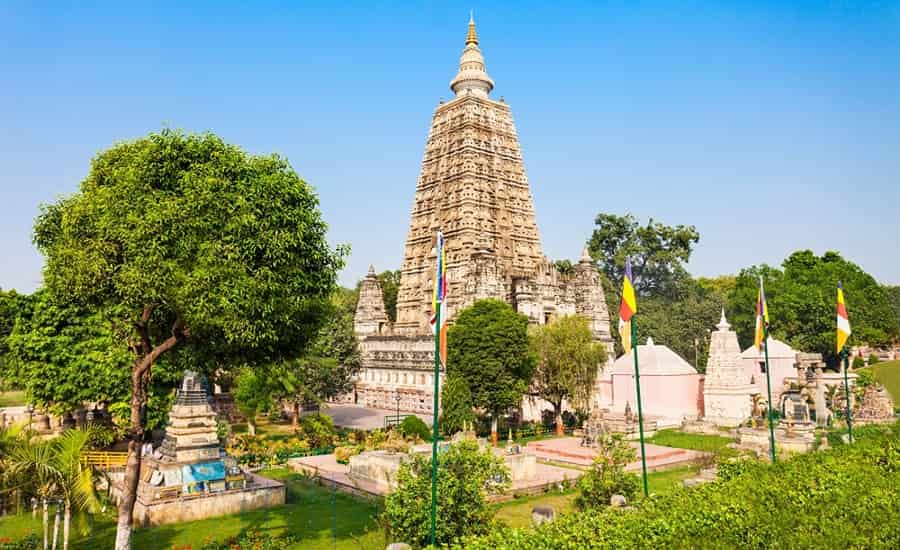Mahabodhi Temple, located in Bodh Gaya, Bihar, India, is a UNESCO World Heritage Site and one of the most significant pilgrimage sites for Buddhists. It is the place where Siddhartha Gautama, the Buddha, is said to have attained enlightenment under the Bodhi tree. When planning a visit to Mahabodhi Temple, understanding the seasonal variations, weather conditions, and temperatures is crucial to ensure a comfortable and fulfilling experience. In this comprehensive guide, we will explore the best time to visit Mahabodhi Temple, taking into account the different seasons and their impact on weather and temperature.
- Best Time to Visit: November to February and March to May

Winter (November to February)
Weather
Winter is considered one of the best times to visit Mahabodhi Temple. The weather during this season is characterized by cool and pleasant temperatures, making it ideal for outdoor activities and sightseeing. The days are generally clear and sunny, providing an excellent atmosphere for exploring the temple complex and its surroundings.
- Also Read: Buddhist Pilgrimage Sites in Bihar
Temperature
The temperature during winter in Bodh Gaya ranges from 7°C to 20°C (45°F to 68°F). While the mornings and evenings can be chilly, the afternoons are comfortably cool. Travelers are advised to carry light woolens for the cooler evenings and early mornings.
Advantages of Visiting in Winter
- Comfortable weather for exploring the temple complex and surrounding areas.
- The Bodhi tree and temple look enchanting against the clear winter sky.
- Festivals and events often take place during this season, adding to the cultural experience.
Considerations
- Accommodations may be in high demand, so it’s advisable to book in advance.
- Popular tourist season, so expect larger crowds, especially around major festivals.
Spring (March to May)
Weather
Spring brings a gradual rise in temperature, and the weather becomes warmer. While it is still a favorable time to visit Mahabodhi Temple, the temperatures start to climb as the season progresses. Early spring is more comfortable compared to late spring.
Temperature
Temperatures in spring range from 20°C to 37°C (68°F to 99°F). March offers pleasant weather, but by May, temperatures can become quite hot. It’s advisable to plan your visit in the earlier part of the season to avoid the peak heat.
Advantages of Visiting in Spring
- Blooming flowers and lush greenery enhance the beauty of the surroundings.
Fewer crowds compared to the winter season. - Ideal for those who prefer warmer weather but want to avoid the extreme heat of summer.
Considerations
- Carry sunscreen, a hat, and light clothing to protect against the increasing heat.
- Stay hydrated, especially if visiting in late spring when temperatures are higher.
Summer (June to August)
Weather
Summer in Bodh Gaya is characterized by high temperatures and the onset of the monsoon season. The weather becomes hot and humid, and rainfall increases as the monsoon progresses.
Temperature
Temperatures during summer range from 25°C to 40°C (77°F to 104°F). June is relatively hot, and July marks the beginning of the monsoon, bringing relief from the heat. However, heavy rainfall can disrupt outdoor activities.
Advantages of Visiting in Summer
- The landscape is lush and vibrant due to the monsoon rains.
- Fewer tourists, providing a quieter and more introspective experience.
Considerations
- Be prepared for sudden and heavy rainfall; carry a raincoat or umbrella.
- The humidity can be high, so dress accordingly and stay hydrated.
Monsoon (September to October)
Weather
The monsoon season continues into September, but the rainfall gradually decreases. October marks the transition from monsoon to post-monsoon, with drier and more comfortable conditions.
Temperature
Temperatures range from 23°C to 35°C (73°F to 95°F) during the monsoon season. As the season progresses, the weather becomes more pleasant.
Advantages of Visiting in Monsoon
- The landscape is at its most picturesque, with the surroundings lush and green.
- The monsoon marks an essential period in the agricultural calendar, and visitors can witness local farming activities.
Considerations
- Carry waterproof gear, as occasional rainfall can still occur in September.
- October offers more stable weather, making it a better choice for those who want to avoid the peak monsoon conditions.
[Suggested Tour: Book Special Gaya Holiday Packages]
Conclusion
Choosing the best time to visit Mahabodhi Temple depends on personal preferences and tolerance for different weather conditions. While winter is generally considered the most comfortable season, each season offers unique experiences. Whether you prefer the cool weather of winter, the blooming landscapes of spring, the lush greenery of monsoon, or the quieter atmosphere of summer, Mahabodhi Temple welcomes visitors throughout the year. Plan your trip according to your preferences, and immerse yourself in the spiritual and cultural richness of this iconic Buddhist pilgrimage site.
Also Read:

 Call
Call WhatsApp
WhatsApp Enquiry
Enquiry